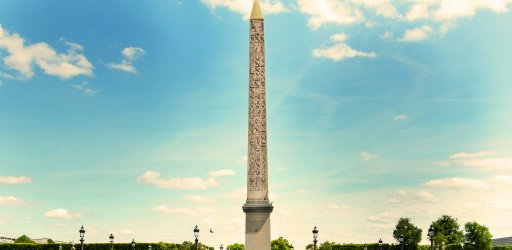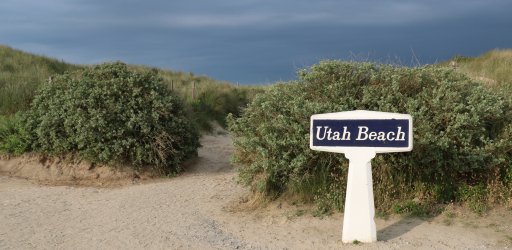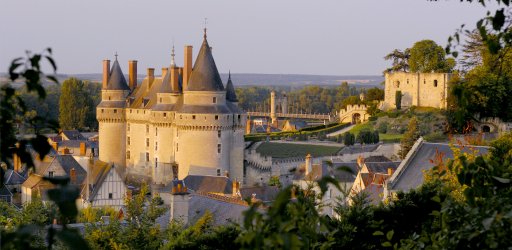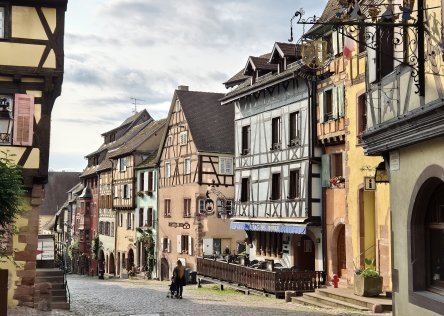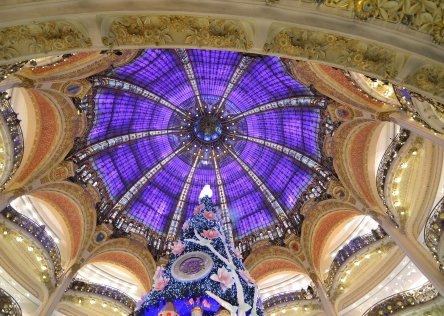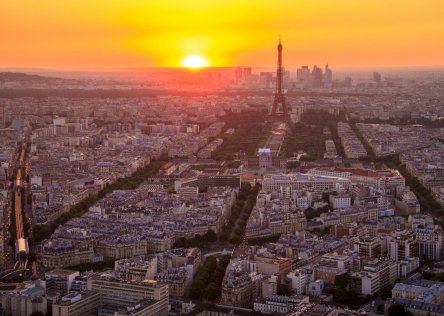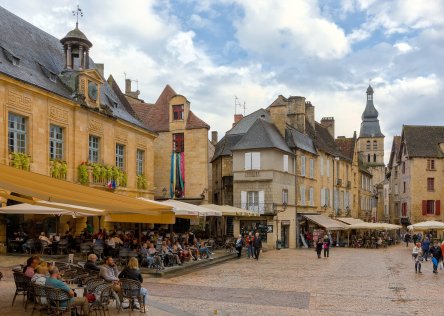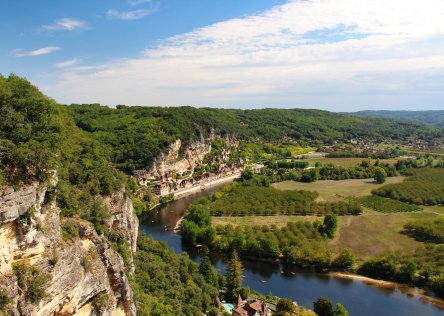Whether you would consider yourself a history buff or not, we all have a duty of remembrance toward those who fought and perished at the D Day landing sites during the Normandy invasion of June 1944.
These are some of the main World War II sites in Normandy that you may like to visit on a Normandy road trip. You may also like to look at our other maps of Normandy.
You can visit the D Day landing sites with a private guide, on a group tour, or on your own as part of a self guided tour of France.
All of our tours are self-guided driving tours - however, we believe that some areas are better experienced with the help of a private guide who can explain the history and interesting stories of a place. This helps visitors develop a fuller understanding of events and become fully immersed in French history and culture.
For a better understanding of the Battle of Normandy, the D-Day landing sites, and the strategy employed by the Allied Troops, we warmly recommend visiting the landing beaches with a local guide.
If you have a special interest in world war history, you may enjoy our World War History Tour of France
Normandy Invasion WW2 Sites Map

D Day landing sites - map of Normandy ©www.france-for-visitors.com
Utah Beach
This is the westernmost beach of the five landing areas of the Normandy Invasion of World War II. It was invaded on D-Day by elements of the U.S. 4th Infantry Division and was taken with relatively few casualties. In the pre-dawn hours of the landing, units of the 82nd and 101st airborne divisions were air-dropped inland from the landing beach. They suffered many casualties from drowning and enemy fire but succeeded in their objective of isolating the invasion forces from defending German units.

Utah beach (Photo: Duch.seb CC by SA 3.0)
Omaha Beach
Omaha Beach was invaded on June 6, 1944 (D-Day) by units of the U.S. 29th and 1st infantry divisions. Many soldiers drowned during the approach from ships offshore, or were killed by defending fire from German troops surrounding the beach. Here is a short animated video that explains what happened on the day of the Normandy invasion at Omaha Beach:
[video:https://www.youtube.com/watch?v=t3P11ENBZyc autoplay:0]
Credit: Daniel Turner, Simple History
Omaha beach is sadly famous for the most devastating but glorious moment of the Normandy invasion. It is on this American sector that the number of Allied casualties was highest. This very long sandy beach remains a silent homage to the D-Day and its victims. It has an impressive war memorial monument on the beach, and a museum with artillery equipment from the battle. To really live the experience and understand what happened during the Normandy invasion, we recommend hiring a private guide who can take you to the most relevant places of interest, and talk you through the events. The nearby town of Bayeux has a larger and even more impressive War Museum, with more information about the history of the battle, photo, artillery and other war exhibits. It's worth a visit if you have time.

Omaha Beach - ©OTI Bayeux
The American Cemetery in Colleville sur Mer
Right above Omaha beach, the American cemetery, stretching away as far as the eye can see, reminds us of the importance of the battle of Normandy in this sector. Omaha beach is key to understanding the US invasion. However, if you don't know much about this historical event - or don't have a guide to explain it to you in depth - you may well feel like you've missed out on something. This is why we work with local Norman guides who speak English fluently and have grown up in the area. They will have you factually live and understand what happened on D-Day.

US Cemetery Memorial in Colleville sur Mer - ©OTI Bayeux
Arromanches
Arromanches is known for its artificial Mulberry port, which was constructed during the Second World War in eight days. It is 5 miles long and was finished just before the Normandy invasion. At that time, it showed real technical prowess to be able to build a port in such a short timeframe. It is a proof of the industrial and technological exploits of the war. Enormous blocks of cement were dragged from England and dropped near Arromanches so that the big war ship could moor and discharge the hundreds of soldiers and war vehicles and weapons it had on board on D Day.
More recently, an important attraction that we recommend is the 360° movie theater called 'Arromanches 360', which projects different movies every year made up of archives about the invasion of Normandy. It is not just a documentary; it is a moving and intense experience that allows the spectator to get a deep sense of what happened. The dramatic scenes of the Normandy landings on D Day will plunge you right to the heart of the action.
We have worked on daily itineraries in Normandy, so our travelers can discover WWII history as well as this beautiful region’s gardens, historical sites, gastronomy and lovely people. As you will see on the internet, there are dozens of landing sites you can visit and you will feel lost to make a choice. We have selected few landing sites that we think are very representative of what happened on D-Day so you will feel and understand what happened on the Normandy beaches.
Artificial Port of Arromanches during the Landing in Normandy - ©OTI Bayeux
Pointe du Hoc
During World War 2, the overhang of the cliff into the English Channel was fortified by the Germans to establish an observation post. From there, the Nazis could see the entire ocean that would be invaded by the Western Allies during the Invasion of Normandy.
At Omaha beach, the plan was to capture this vantage point from the Germans, which was particularly dangerous for the Operation Overlord's chances of success. It was a fastidious task for the Americans and the Nazis did not give it up easily.
Nowadays, in commemoration of this epic encounter, a granite needle has been placed at the very edge of the Pointe du Hoc as a memorial.
The ground had been bombed so much that today, you still have this surreal feeling of being on the moon.

Pointe du Hoc - ©OTI Bayeux
Juno Beach
Juno Beach was the second beach from the east - after Sword Beach - among the five landing areas of the Normandy Invasion. Troops from the Canadian 3rd Infantry Division landed there on D-Day, taking heavy casualties in the first wave. However, by the end of the day, they succeeded in taking control of the area. The landing area code-named Juno Beach was six miles wide and stretched on the small fishing port of Courseulles-sur-Mer. Canadian travelers will find answers to all their questions in the very interesting Juno Beach Visitors Center.
To pay tribute to the Canadian soldiers, travelers can visit the Canadian Cemetery in Reviers - between Caen and Courseulles sur Mer - which hosts 2,049 graves.

Juno Beach (Paul Arps, Flickr)
Gold & Sword Beaches and the British Cemeteries
Gold Beach was the centre beach of the five designated landing areas of the Normandy Invasion of World War II. It was taken by units of the British 50th Infantry Division. The landing area code-named Gold Beach was five miles wide. On the western end of the beach was the small port of Arromanches, and slightly west of that port was the town of Longues-sur-Mer (and the German Battery).
Sword Beach, the easternmost beach of the five landing areas, was invaded by units of the British 3rd Division, with French and British commandos attached. Shortly after midnight on D-Day morning, elements of the 6th Airborne Division seized bridges just inland from the beach and also silenced artillery pieces that threatened the seaborne landing forces.

British Cemetery in Bayeux following the Normandy Invasion during World Way II - ©OTI Bayeux
German cemeteries
Not so well known by Anglo-Saxon travelers, there are also German cemeteries in Normandy - the most visited is La Cambe. It is composed of an impressive necropolis surrounded a gigantic lawn, where the 21,500 German soldiers who died during the Normandy Invasion are now resting.

German Cemetery in La Cambe - ©OTI Bayeux
Caen Memorial
For those who want to deepen their knowledge of the main conflicts of the 20th Century, the Caen Memorial is a must-see. A whole section of the museum is dedicated to the Second World War and specifically to the Invasion of Normandy. There are also a lot of exhibits about World War I.
The museum was officially opened on 6 June 1988 on the 44th Anniversary of D Day by the French President François Mitterrand.
Caen Memorial has evolved throughout the years and in 1991 a gallery dedicated to the Nobel Peace Prize opened. There are also three gardens dedicated to the American, Canadian and British soldiers. In 2002, President Jacques Chirac inaugurated an extension to the museum dedicated to the Cold War (including fragments of the Berlin Wall).
If you only plan to visit the WWII section of the museum, you should allow about half a day. If you want to see the whole museum, then you should plan to stay in Caen for the whole day. We recommend a visit of Caen Memorial to history lovers who plan to spend at least five days in Normandy.

Non Violence - This masterpiece will welcome you in Caen Memorial - Sculptor: Carl Fredrik Reuterswärd, Sweden.
The Non Violence sculpture by Carl Fredrik Reutersward was created following the murder of John Lennon. From the same series, there are "non violence" masterpieces in the Headquarters of the United Nations in New York and in the European Union HQ in Brussels.
Normandy from Paris
Normandy region is very easy to reach from Paris: it is a short 2hr30 drive to reach Caen and less than 3 hours to drive to Bayeux.
If you would like to visit some of these sights, these can be included in any of our Normandy self drive itineraries.
France Just For You is rewarded with the Trip Advisor Certificate of Excellence.
We keep working hard for our travelers to have the best experience in France.


